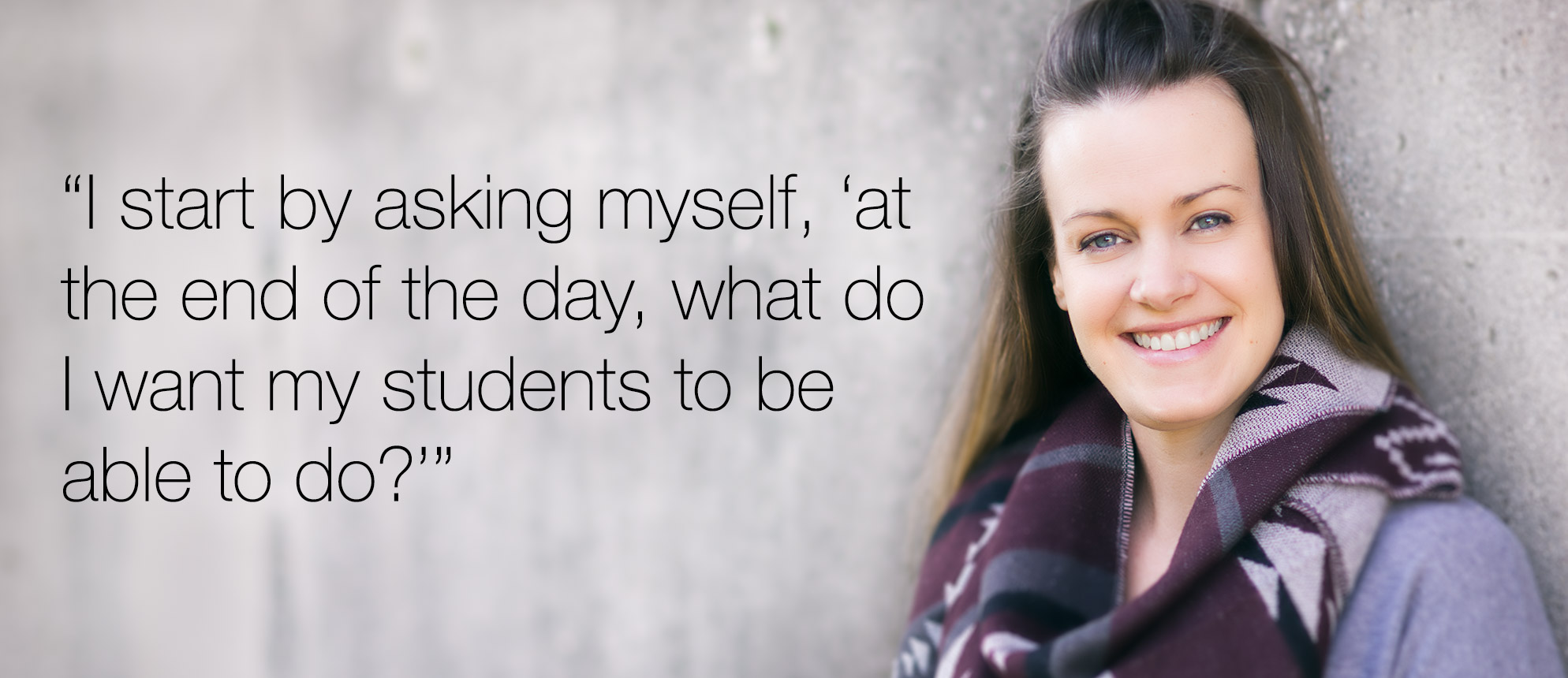- Future Students
- Current Students
- Faculty
- Staff
- Alumni
- Others
Finding New Methods to Reach Students

Before Dr. Kerry Ritchie teaches a course, she starts by asking herself a question. Rather than wondering what textbook chapters to cover or how long her students’ essay should be, Dr. Ritchie, who teaches in the Kinesiology program at the University of Guelph-Humber, looks farther down the line.
“I start by asking myself, ‘at the end of the day, what do I want my students to be able to do?’” she says. “It’s freeing to move from what content I need to teach to what outcomes I want for them.”
It’s a subtle change, but it’s affected how Dr. Ritchie designs and teaches all of her courses.
While doing her PhD in physiology at the University of Guelph, Dr. Ritchie had her first experience teaching a class. While she says that she’s always loved teaching and known that it’s her calling, she felt a change the first time she did it. After developing an introductory course on biology and health, she became curious about the most effective ways to help students learn. In the years since, she’s been working to bring teaching’s best practices to her classrooms. For Dr. Ritchie, the classroom is a laboratory, and she has experimented with small group work, seminars and experiential learning to teach lessons that stick.
“A lot of it comes down to trial and error,” she says. “I see a problem, come up with a solution to fix it, implement it, test it and then write up my results. It’s still the scientific method, I’m just not wearing a lab coat.”
In recent years, Dr. Ritchie has been partnering with local public health authorities to give her students a chance to try and fix real world problems. She meets with the health authorities, asks for current health issues they’re trying to solve, and then designs her course so that her students will learn to propose solutions. This year, they are working in Orangeville, Ontario where the health authority worried the community didn’t have access to healthy food. To learn more, Dr. Ritchie and her students travelled there by bus and canvassed neighbourhoods, asking them about food affordability and accessibility.
“They collected data, analyzed it, and we spent the rest of the semester brainstorming answers to these problems,” Dr. Ritchie says. “They got feedback from the public health mentors, integrated that into their plans, and then the top two or three groups might have the opportunity to present their pitches to the health authority’s food charter meeting.”
While not all their ideas will be used, the students got exposure to talking to people about their problems and using what they’ve learned in class to fix them.
“It’s critical thinking and communication in a real world setting,” Dr. Ritchie says. “Those are lessons I don’t think they’ll forget.”
Biography
Dr. Ritchie has a BSc and a PhD from the University of Guelph. She is an assistant professor at the University of Guelph and has been teaching at UofGH since the creation of the Kinesiology program in 2008. Along with her research on human physiology and nutrition, Dr. Ritchie is also a scholar of teaching and learning. In 2015, she used a grant from UofGH’s Research Grant Fund to study the effectiveness of experiential learning in her classroom.
Areas of Expertise
Teaching and Learning Research
Physiology
Human nutrition
Health interventions
Learn more about Kinesiology at the University of Guelph-Humber.

